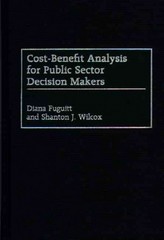Question
1.) Fiscal Year-End -20xx Fiscal Year - 20xx Company A Company B ASSETS Current assets: Cash $153,106 $128,108 Accounts Receivable $54,411 $116,421 Inventory $105,638 $178,446
1.) Fiscal Year-End -20xx Fiscal Year - 20xx Company A Company B ASSETS Current assets: Cash $153,106 $128,108 Accounts Receivable $54,411 $116,421 Inventory $105,638 $178,446 Prepaid insurance $124,968 $146,554 Prepaid rent $55,381 $196,151 Other $163,410 $53,162 Total Current Assets Non-Current Assets Land $55,390 $88,495 Equipment $185,695 $190,866 Notes receivable $111,240 $137,140 Total Assets Liabilities Current Liabilities Accounts payable $75,892 $102,767 Accrued payroll and benefits $69,493 $194,354 Other $163,410 $53,162 Total Current Liabilities Non-Current Liabilities Long Term debt $125,681 $161,261 Other Long Term debt $154,848 $194,302 Total Non-Current Liabilities Shareholders Equity Common Shares Total Shareholders Equity Liabilities & Sharehoders`Equity Find the Quick Acid Test Ratio for Company B. 2.) Two Company Comparison CONSOLIDATED BALANCE SHEETS Fiscal Year-End -20xx Fiscal Year - 20xx Company A Company B ASSETS Current assets: Cash $75,899 $134,041 Accounts Receivable $82,583 $107,490 Inventory $103,082 $156,132 Prepaid insurance $176,406 $81,276 Prepaid rent $192,770 $108,203 Other $54,634 $137,743 Total Current Assets Non-Current Assets Land $94,447 $139,966 Equipment $133,808 $166,755 Notes receivable $65,473 $127,510 Total Assets Liabilities Current Liabilities Accounts payable $103,989 $122,597 Accrued payroll and benefits $149,333 $196,177 Other $54,634 $137,743 Total Current Liabilities Non-Current Liabilities Long Term debt $173,077 $198,954 Other Long Term debt $160,297 $137,716 Total Non-Current Liabilities Shareholders Equity Common Shares Total Shareholders Equity Liabilities & Shareholder equity Find the Current Ratio for Company B. 3.) Two Company Comparison CONSOLIDATED BALANCE SHEETS Fiscal Year-End -20xx Fiscal Year - 20xx Company A Company B ASSETS Current assets: Cash $73,170 $175,223 Accounts Receivable $104,159 $89,569 Inventory $75,236 $119,909 Prepaid insurance $80,388 $98,839 Prepaid rent $180,319 $129,821 Other $140,268 $195,365 Total Current Assets Non-Current Assets Land $86,460 $145,272 Equipment $199,187 $104,690 Notes receivable $72,049 $75,015 Total Assets Liabilities Current Liabilities Accounts payable $186,545 $109,387 Accrued payroll and benefits $156,571 $76,411 Other $140,268 $195,365 Total Current Liabilities Non-Current Liabilities Long Term debt $112,608 $54,013 Other Long Term debt $107,233 $153,038 Total Non-Current Liabilities Shareholders Equity Common Shares Total Shareholders Equity Liabilities & Sharehoders`Equity Find the Quick Acid Test Ratio for Company A. 4.) Two Company Comparison CONSOLIDATED BALANCE SHEETS Fiscal Year-End -20xx Fiscal Year - 20xx Company A Company B ASSETS Current assets: Cash $74,263 $62,117 Accounts Receivable $71,089 $122,284 Inventory $159,710 $116,740 Prepaid insurance $78,897 $103,465 Prepaid rent $188,307 $173,616 Other $147,333 $171,064 Total Current Assets Non-Current Assets Land $194,656 $166,857 Equipment $149,304 $155,388 Notes receivable $190,766 $182,837 Total Assets Liabilities Current Liabilities Accounts payable $90,875 $139,569 Accrued payroll and benefits $122,995 $90,620 Other $147,333 $171,064 Total Current Liabilities Non-Current Liabilities Long Term debt $110,469 $170,941 Other Long Term debt $109,181 $98,976 Total Non-Current Liabilities Shareholders Equity Common Shares Total Shareholders Equity Liabilities & Sharehoders`Equity Find the Current Ratio for Company A. 5.) Two Company Comparison CONSOLIDATED BALANCE SHEETS Fiscal Year-End -20xx Fiscal Year - 20xx Company A Company B ASSETS Current assets: Cash $112,720 $100,291 Accounts Receivable $52,469 $188,871 Inventory $96,986 $53,770 Prepaid insurance $90,407 $123,959 Prepaid rent $135,883 $155,039 Other $164,954 $103,789 Total Current Assets Non-Current Assets Land $163,064 $121,960 Equipment $154,527 $74,232 Notes receivable $145,833 $130,626 Total Assets Liabilities Current Liabilities Accounts payable $134,621 $88,050 Accrued payroll and benefits $90,103 $199,655 Other $164,954 $103,789 Total Current Liabilities Non-Current Liabilities Long Term debt $71,059 $81,974 Other Long Term debt $85,142 $70,699 Total Non-Current Liabilities Shareholders Equity Common Shares Total Shareholders Equity Liabilities & Sharehoders`Equity Find the Debt Ratio for Company A. 6.) As a potential creditor, which ratio(s) would you be using to help determine if a company has the ability to pay back its financial obligations over the long term and if you should loan them money in the long term Fixed asset turnover Inventory holding ratio Current ratio Inventory turnover ratio Quick acid test ratio Working capital turnover Gross profit ratio Operating profit ratio ROE Debt to equity ratio Debt ratio Net profit ratio 7.) Examples of profitability ratios Debt ratio Inventory holding period Quick acid test ratio Operating profit margin Return on Equity Current ratio Inventory turnover margin Return on assets Debt to equity Working capital turnover Gross profit margin Net profit margin 9.) Connect each specific ratio to its ratio category: Current ratio Quick Acid Test ratio Debt ratio Gross Profit ratio Operating Profit ratio Net Profit ratio A. Coverage ratios B. Efficiency ratios C. Activity ratios D. Profitability ratio E. Liquidity Ratio F. Solvency Ratio 10.) As a potential creditor, which ratio(s) would you be using to help determine if a company has the ability to pay back its short term obligations and if you should loan them money in the short term, Gross profit ratio Operating profit ratio ROE Fixed asset turnover Inventory holding period Working capital turnover Current ratio Debt ratio Net profit ratio Inventory turnover ratio Debt to equity ratio Quick acid test turnover
Step by Step Solution
There are 3 Steps involved in it
Step: 1

Get Instant Access to Expert-Tailored Solutions
See step-by-step solutions with expert insights and AI powered tools for academic success
Step: 2

Step: 3

Ace Your Homework with AI
Get the answers you need in no time with our AI-driven, step-by-step assistance
Get Started


